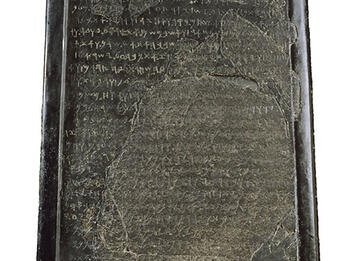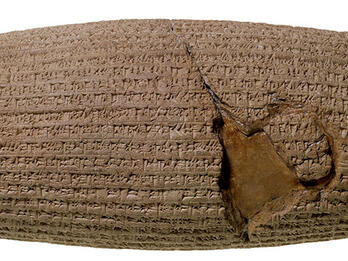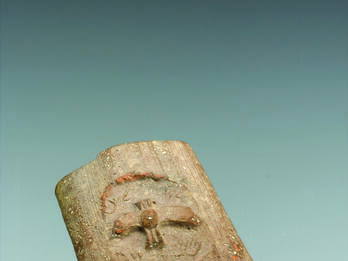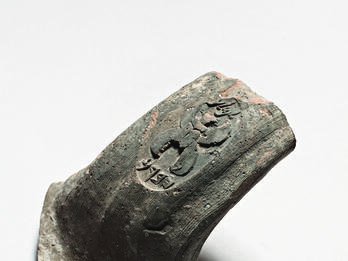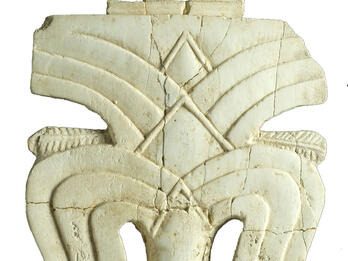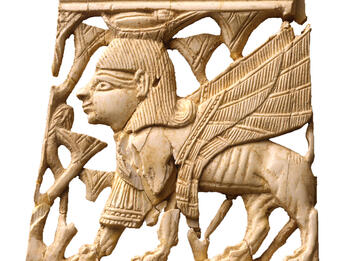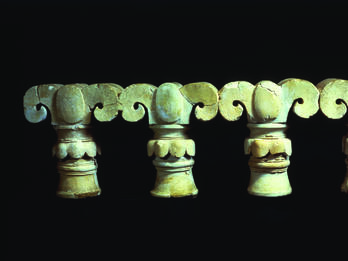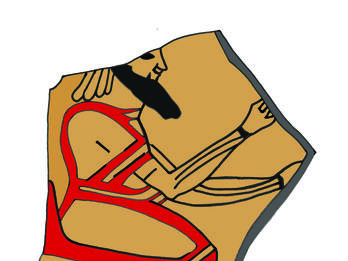Showing Results 11 - 20 of 63
Restricted
Text
Image
I am Mesha son of Chemoshyat king of Moab, the Di-bonite. My father reigned over Moab thirty years and I reigned after my father.
And I built this high place for Chemosh in the “citadel,” a high place…
Places:
Dibon, Moab (Amman, Jordan)
Date:
ca. 835 BCE
Subjects:
Categories:
Restricted
Text
I mobilized the kings of Hatti and “Beyond-the-River”: Baal, king of Tyre; Manasseh, king of Judah; Kaus-gabri, king of Edom; Mutsuri, king of Moab; Tsilli-Bel, king of Gaza; Mitinti, king of Ashkelon…
Places:
Nineveh, Assyria (Mosul, Iraq)
Date:
673–672 BCE
Subjects:
Categories:
Restricted
Text
½ (panu) to Jehoiachin, king of Ju[dah]
2 ½ qu to the five sons of the king of Judah
4 qu to 8 Judeans, ½ [qu each]
1 ½ qu to three carpenters from Arvad, ½ qu each
½ panu 1 ½ qu to eight carpenters…
Places:
Babylon, Babylonia (Babylon, Iraq)
Date:
592 BCE
Subjects:
Categories:
Restricted
Image
Cyrus Cylinder, Babylonia. In the inscription, Cyrus, the king of Persia (reigned 559–530 BCE), declares that he was chosen by Marduk, the god of Babylon, to free its citizens from the tyranny and…
Places:
Babylon, Babylonia (Babylon, Iraq)
Date:
539 BCE
Subjects:
Categories:
Restricted
Image
Many of the seal impressions, with the inscription lamelekh “(Belonging, or pertaining) to the king,” followed by the name of a city, feature a two-winged figure, probably a winged sun disk…
Places:
Tel ‘Erani, Land of Israel (Tel ‘Erani, Israel)
Date:
Iron Age IIB–IIC, Late 8th–7th Century BCE
Subjects:
Categories:
Restricted
Image
Some lamelekh impressions, like this one from Lachish, have a four-winged scarab beetle as their central image. The scarab beetle was an important mythological symbol in Egypt, associated with Khepri…
Places:
Lachish, Land of Israel (Tel Lakhish, Israel)
Date:
Iron Age IIB–IIC, Late 8th–7th Century BCE
Subjects:
Categories:
Restricted
Image
This and the next several ivories come from the approximately twelve thousand ivory pieces and fragments that were found in the royal compound in the city of Samaria, capital of the Northern Kingdom…
Places:
Samaria, Land of Israel (Samaria, Israel)
Date:
Iron Age IIA–IIB, 9th–8th Century BCE
Subjects:
Categories:
Restricted
Image
Sphinxes are among the most ubiquitous images on Iron Age Levantine ivories. The sphinx combines the features of several animals; it has the head of a human, the wings of an eagle, and the body of a…
Places:
Samaria, Land of Israel (Samaria, Israel)
Date:
Iron Age IIA–IIB, 9th–8th Century BCE
Subjects:
Categories:
Restricted
Image
Palm imagery is a common motif in decorative architectural elements like window balustrades. Each of the four columns in this partial restoration from the biblical period is six inches in diameter and…
Places:
Ramat Rahel, Land of Israel (Ramat Rahel, Israel)
Date:
Iron Age II, Late 8th–Early 7th Century BCE
Subjects:
Categories:
Restricted
Image
This is a modern artist’s illustration of a painting of a seated male in profile, perhaps an enthroned dignitary. The painting was made on a potsherd from Ramat Rahel. It measures around 5 × 3 inches…
Places:
Ramat Rahel, Land of Israel (Ramat Rahel, Israel)
Date:
Iron Age II, Late 8th–Early 7th Century BCE


